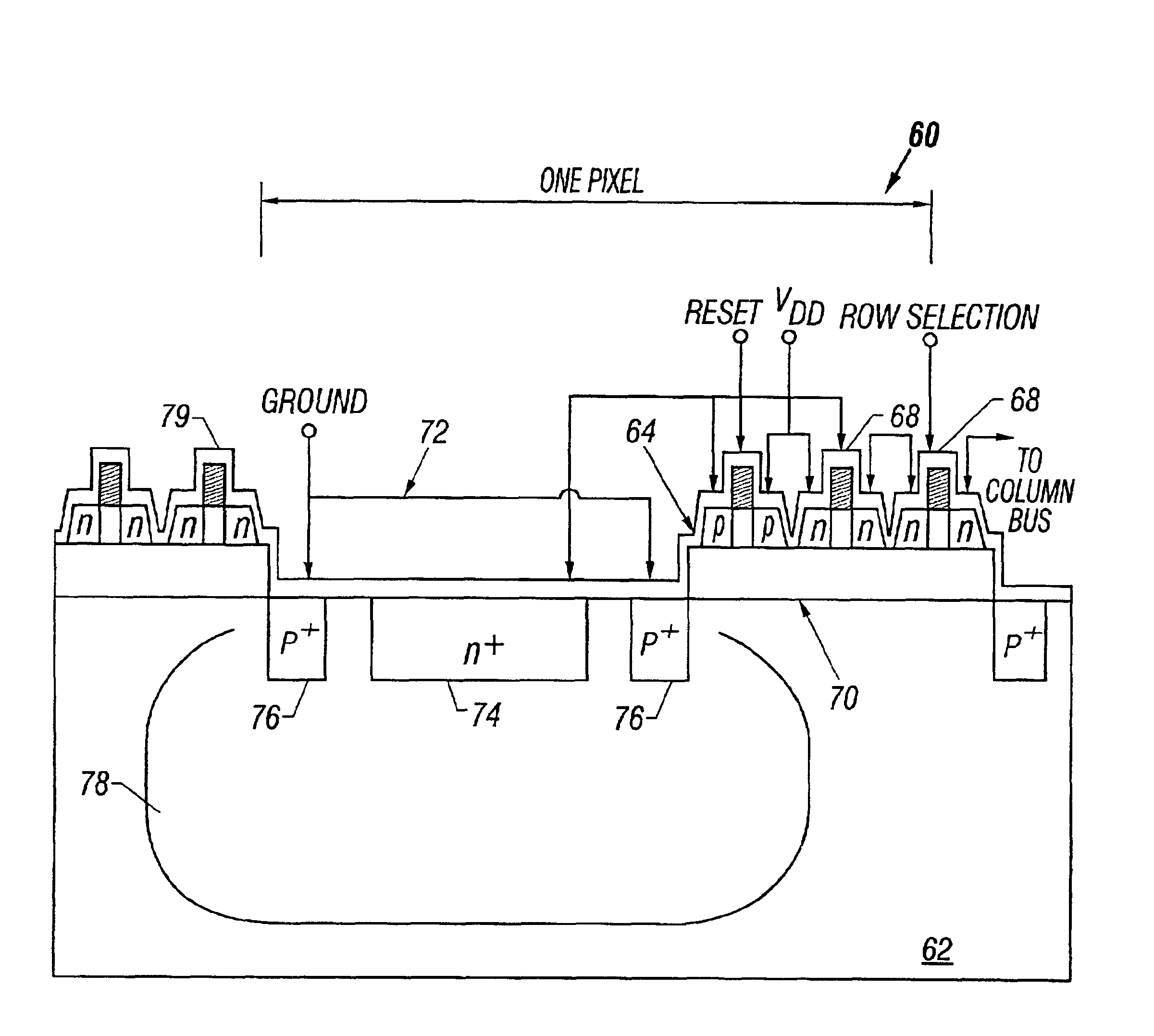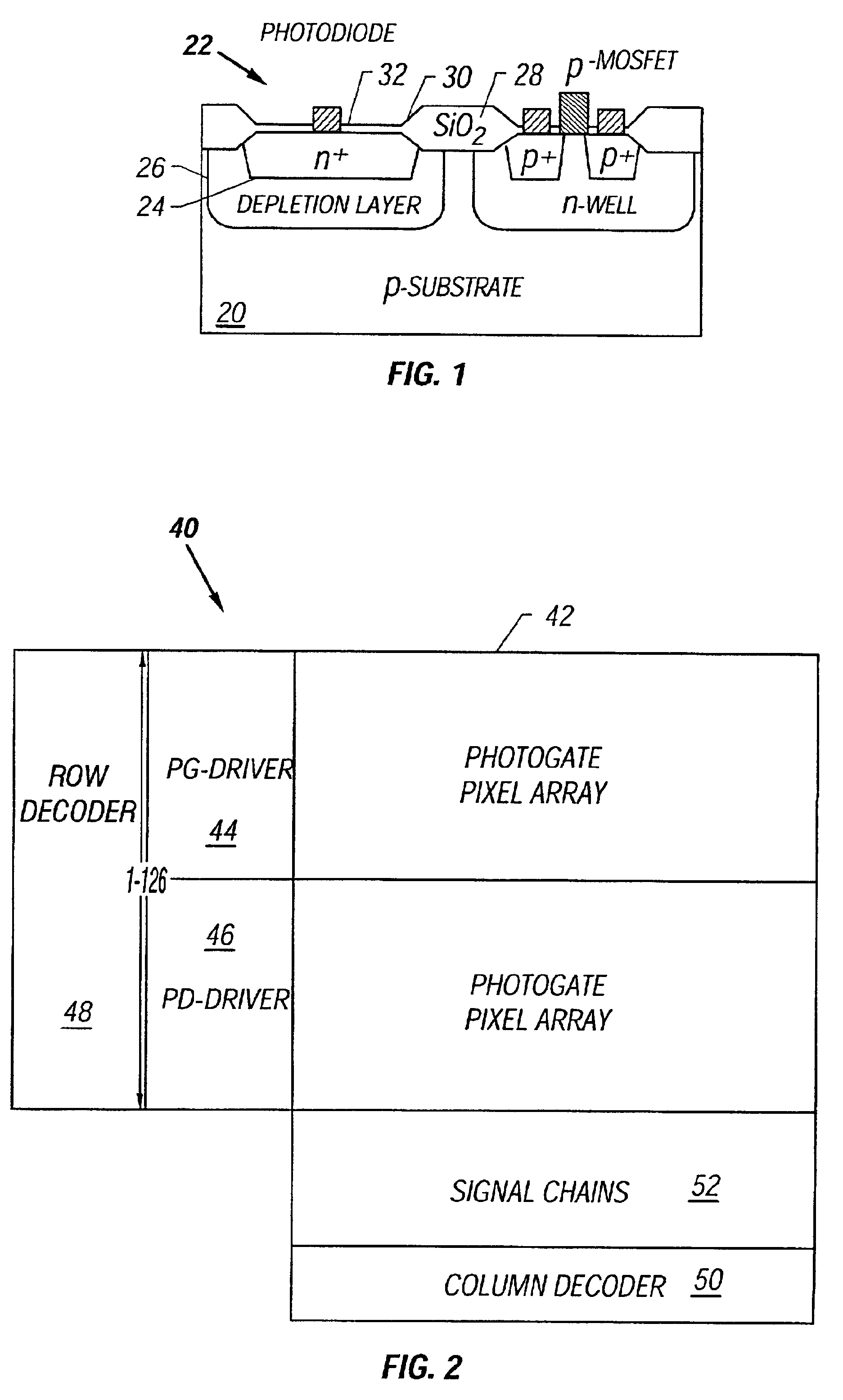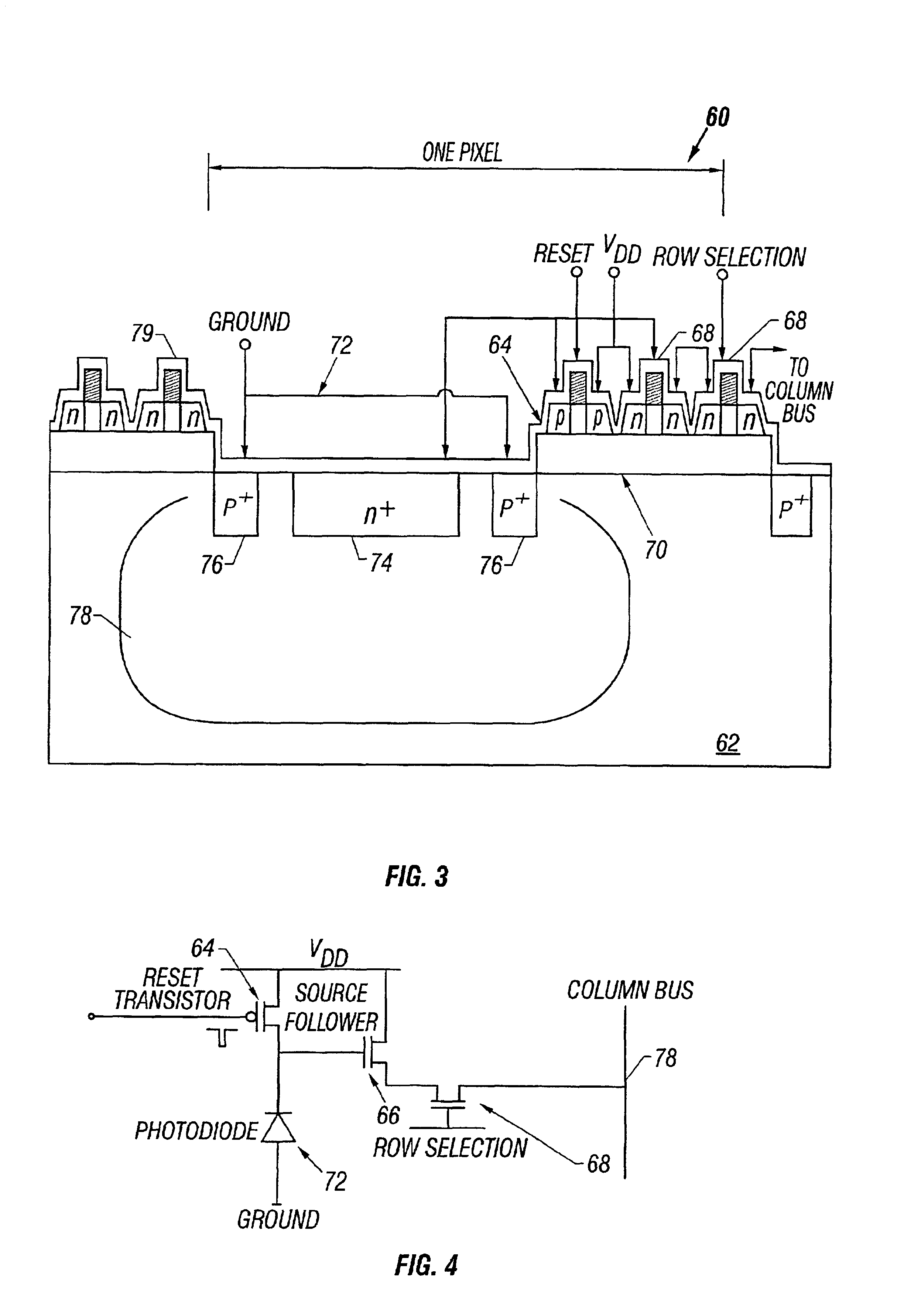Silicon-on-insulator (SOI) active pixel sensors with the photosite implemented in the substrate
a technology of active pixel and silicon on the substrate, which is applied in the field of image sensors, can solve the problems of affecting the performance of imagers, consuming large amounts of energy, and requiring specialized silicon processing that is not compatible with cmos technology, and achieves low noise, low cost, and low cost.
- Summary
- Abstract
- Description
- Claims
- Application Information
AI Technical Summary
Benefits of technology
Problems solved by technology
Method used
Image
Examples
Embodiment Construction
FIG. 2 shows an exemplary active pixel sensor imager 40 formed on an integrated circuit chip that includes an array 42 of active pixel sensors. In one implementation, for example, the imager 40 includes a 144×128 array of pixels. The array 42 can include photogate pixels and / or photodiode pixels. The imager 40 also includes circuitry 44 for driving the photogate pixels and circuitry 46 for driving the photodiode pixels. In addition, the imager 40 has a row decoder 48 for selecting a particular row of pixels and a column decoder 50 for selecting a particular column of pixels, as well as source-follower signal chain circuitry 52. The signal chain circuitry can include, for example, enhancement mode and / or depletion mode source-followers. An on-chip controller (not shown) controls the operation of the decoders 48, 50, the drivers 44, 46 and the pixels.
In general, the imager 40 can be fabricated using a SOI-CMOS process by integrating the photodetectors on the SOI substrate, instead of ...
PUM
 Login to View More
Login to View More Abstract
Description
Claims
Application Information
 Login to View More
Login to View More - R&D
- Intellectual Property
- Life Sciences
- Materials
- Tech Scout
- Unparalleled Data Quality
- Higher Quality Content
- 60% Fewer Hallucinations
Browse by: Latest US Patents, China's latest patents, Technical Efficacy Thesaurus, Application Domain, Technology Topic, Popular Technical Reports.
© 2025 PatSnap. All rights reserved.Legal|Privacy policy|Modern Slavery Act Transparency Statement|Sitemap|About US| Contact US: help@patsnap.com



